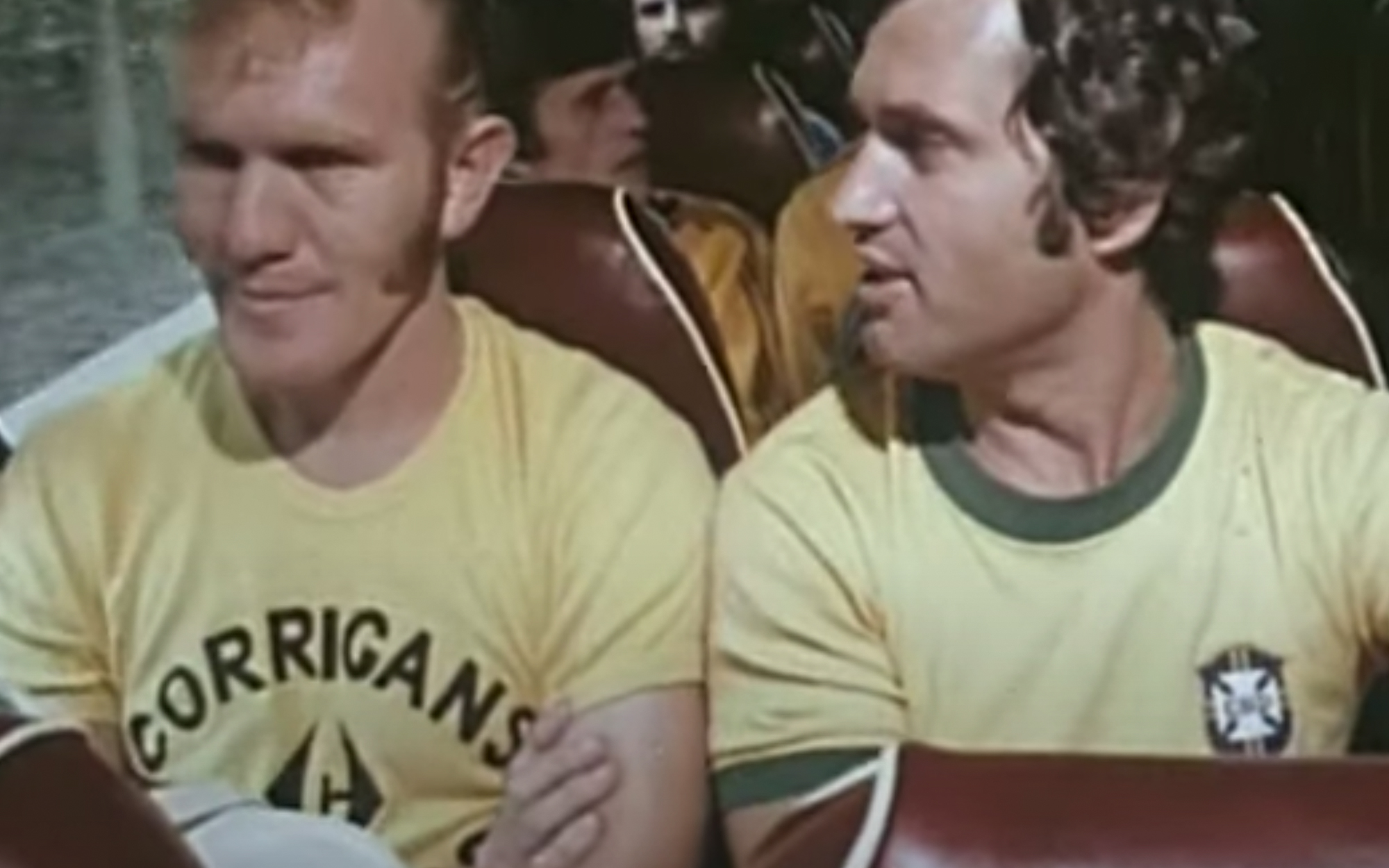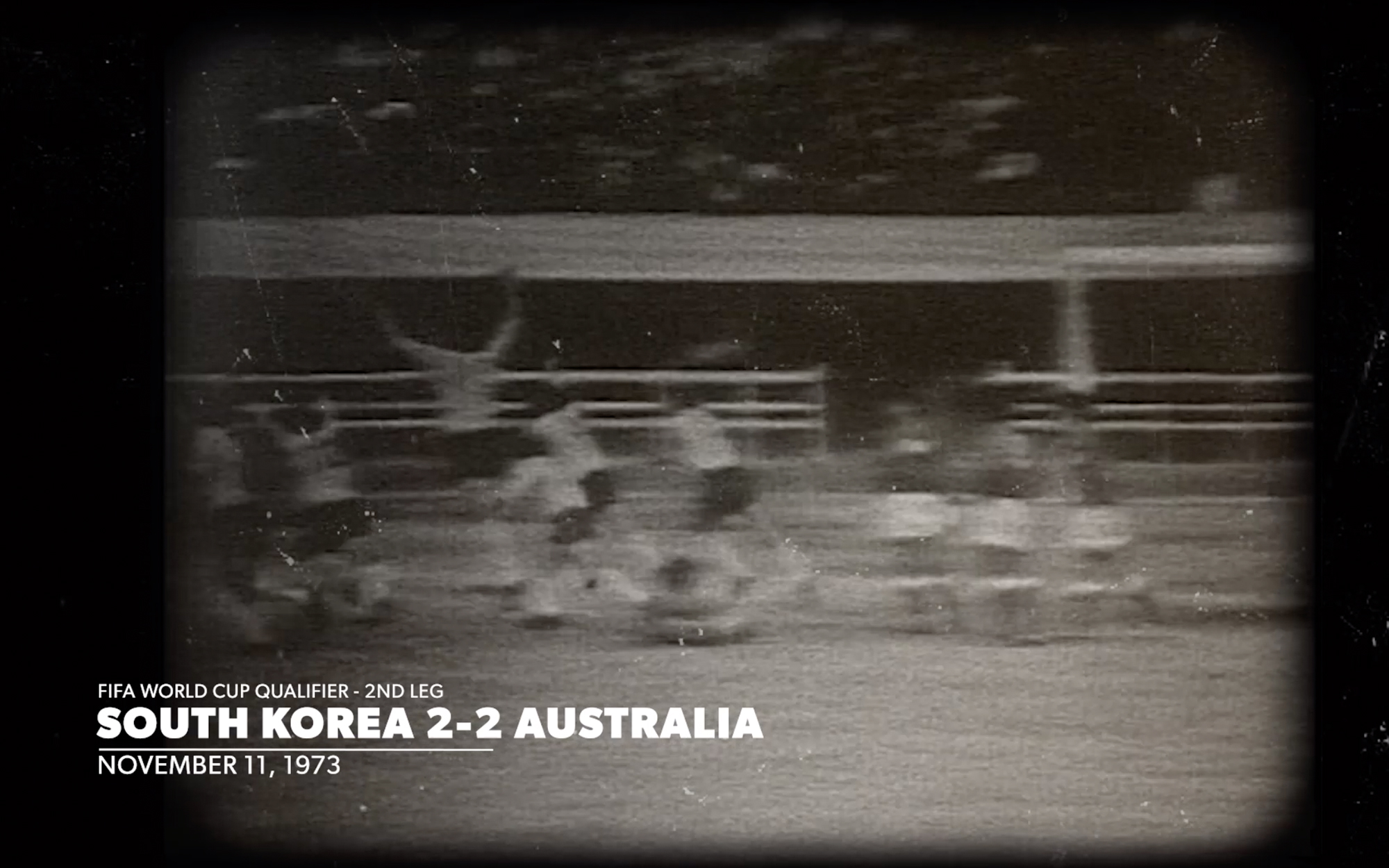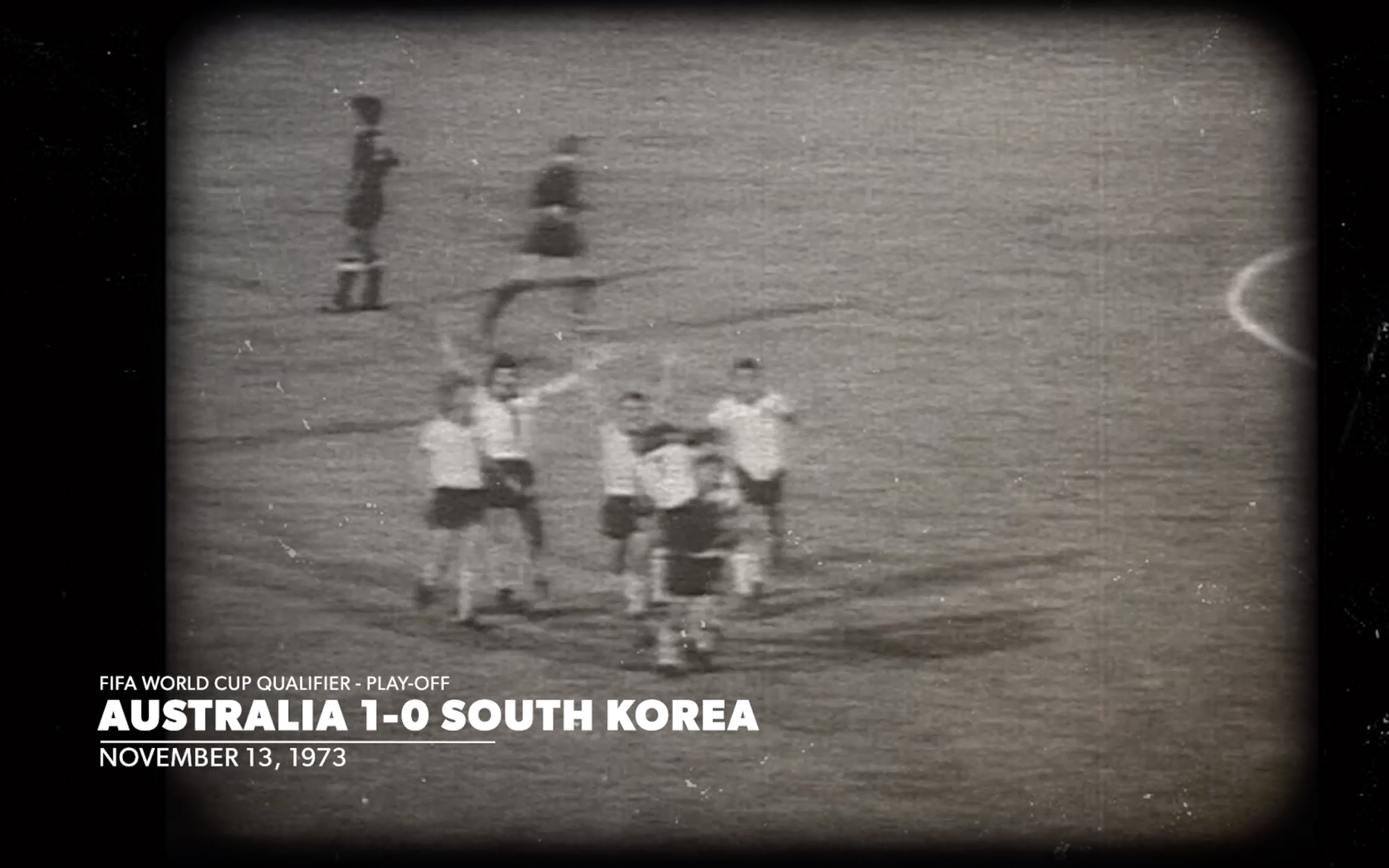Watch Football Stories: The Heroes of 1974
Nearly half a century on from Australia’s first appearance at the FIFA World Cup finals, Socceroos.com.au reunites six pioneers of the game in the exclusive series - Football Stories: The Heroes of 1974.
The entire series is out now!
The roundtable discussion includes legendary coach Rale Rasic and squad members Adrian Alston, Jim Rooney and Doug Utjesenovic, Jim Fraser and Ray Baartz.
Get ready to take a trip down memory lane by meeting a handful of the characters responsible for where Australia football is today.
There is no shortage of memorable moments throughout this six-episode special.
Scroll down to watch all six episodes or watch a special highlights Premiere in the video player at the top!
Episode 1: Why Football?
A previous edition of Football Series posed Socceroos great Harry Kewell a simple yet captivating question: ‘why football?’
This provides a worthy starting point for this conversation, involving a group of men who committed to their lives to the sport purely out of love for the game and their nation.
Watch Episode 1: Why Football? in the video player below!
Much like the national side today, the 1974 Socceroos were a diverse set of talent originating from across the globe.
In the opening episode of Football Stories: The Heroes of 1974, each player provides a remarkable account of their journey that culminated in pulling on the Green and Gold.
Alston was brought up in Preston, England, Rooney in Dundee, Scotland and Utjesenovic in Belgrade, Yugoslavia. Closer to home, Baartz grew up in Newcastle, NSW and Fraser played his first football in Sydney’s Western Suburbs.
Despite their distinct backgrounds, all were, and are still, united by their immense passion for the world game.
After all, there was no financial incentive for anyone to opt for the path they took.
“When we played the money wasn’t an issue as we were part-time players,” Alston explains.
“The most money I ever earned was when I was in America, but people think I am rich because I played professional football for three years…”
While Australia's first international was played against New Zealand in 1922, its first attempt at qualification for the World Cup did not play out until 1965. This ended in disastrous fashion with two heavy defeats to North Korea in Cambodia.
Four years later they went far closer to an elusive finals birth, travelling across the globe to Japan, South Korea and Rhodesia before falling to Israel at the final hurdle. Alston jokes that the heartbreaking result was due to coach Joe Vlatsis leaving him on the bench during that campaign.
Despite the pair of failed attempts, the late ‘60s and early ‘70s marked the rise of the Socceroos we see today – both in name and spirit.
There remains contention surrounding the exact date the renowned term was coined, however most agree the man responsible was journalist Tony ‘Hotspur’ Horstead.
“When Tony first penned the word Socceroos and we all went, ‘you’ve got to be joking Tony!,” Baartz reminisces, “That’s pretty corny, it’ll never take off!
“Here we are today and it’s a household name.”
Episode 2: The Boss
‘Hi Boss!’
Rale Rasic was the last to join the Football Stories call and was welcomed with a chorus of cheery greetings.
The 85-year-old coach has always made a conscious effort to keep in touch with his former squad members, calling them on a monthly basis.
Watch Episode 2: The Boss in the video player below!
Fraser says that he maintains his Western Sydney property in impeccable condition, with ‘not one blade of grass out of place.’ The boss also proudly owns one of the most extensive memorabilia collections in Australian football.
This organisation and sense of camaraderie are emblematic of his approach as a coach all those years ago.
While he admits he was not always as nurturing as his predecessor ‘Uncle Joe’ Vlatsis, Rasic committed his heart and soul to the national team during his four years in charge.
From advocating for resources to ensuring he was the ‘sole selector’ of the national team, the boss left no stone unturned in taking Australian football to the next level.
He was appointed national team coach in August 1970 at the age of just 34, sparking a run of success for the Socceroos that included a 12-match unbeaten streak during the 1972 world tour, an undefeated tour of Asia and a 2-2 draw with Pele’s Santos.

Fraser explains how Rasic and his coaching staff “introduced professional football to Australia.”
“It was a professional environment where you went into the changerooms and the gear was all laid out,” he recalls.
“We got paid a little, training was organised we knew what the other team’s tactics were because they’d done their homework.
“It was just a different world for me when they got involved.”
Episode 3: ‘The Most Important Goal in Australian History’
“That will never be repeated. It was something that you dream about.”
It was a case of third time lucky as Rasic oversaw Australia’s first qualification for a FIFA World Cup finals tournament in 1974.
But as is often the case with Australian football, they did not achieve this the easy way.
Watch Episode 3: ‘The Most Important Goal in Australian History’ in the video player below!
The Socceroos comfortably accounted for New Zealand, Iraq and Indonesia in the first stage of qualifying before setting up a home and away tie with Iran.
After triumphing 3-0 on home soil the squad travelled to Tehran, where they were greeted with a baptism of fire including 119,000 spectators.
The return leg was not as smooth sailing, with the home side racing out to a 2-0 lead.
However to the dismay of the home support, the Australians desperately clung onto their slim advantage to prevail on aggregate.
Utjesenovic recalls how as the clock ran down, he was confronted by the image of a local cameraman on the sidelines with tears streaming down his face. The fullback reflects how it was the “toughest game” he ever played.
The final obstacle in Australia’s path was a strong South Korean outfit, who the Socceroos had faced on many occasions in recent history.
All of those fixtures were toughly fought battles, including Australia’s 3-2 victory in the 1967 Quoc Khanh Cup that earned the nation’s first ever international trophy.
With the stakes higher than ever, this exchange proved no different.
A 0-0 stalemate at home was followed by a 2-2 draw in Seoul, where Baartz scored the equaliser to restore what had been a two-goal deficit at half-time.

With no away goals rule in play, a third deciding fixture was hastily set up on neutral ground in Hong Kong.
“The South Korean team was on the same plane as us going to Hong Kong,” Baartz recounts.
“We were laughing and joking and they were all down and despondent because they thought they’d done enough to qualify leading 2-0.
“We were buoyant, everyone was cracking jokes and it was a psychological win for us.”
Australia’s fate decided by a solitary Jimmy Mackay goal, and what a goal it was.
“For all of us it was the best goal that’s ever been,” Rooney remarks. “It was top corner from 35 yards out!”

You can almost see the glimmer in everyone’s eye as they relive that storied moment.
“There is no way you can deny the goal of Mackay as the greatest in the history of Australian football,” Rasic enforces.
“I recall saying before my hair was black but after that match it was white!”
Episode 4: Two Left Behind
Ray Baartz and Jim Fraser may be two of the most unlucky men in Australian sporting history.
Both played vital roles in securing their nation’s historic qualification for the World Cup with heroic performances at either side of the pitch, however were cruelly denied the chance to play at the tournament.
Watch Episode 4: Two Left Behind in the video player below!
Baartz, labelled by Rasic in Football Stories as “the greatest player ever,” was an immensely talented striker from Newcastle. He once caught the eye of Sir Matthew Busby and for two years trained alongside the likes of George Best, Bobby Charlton and Denis Law at Manchester United.
During Australia’s final home pre-tournament fixture against Uruguay, his career was cut short by two acts of inexplicable violence.
The first, a ‘karate-type motion’ that connected with his throat triggered the swelling of Baartz’s carotid artery and the later onset of stroke symptoms.
Remarkably, he played on the remainder of the fixture, scoring Australia’s opening goal before Peter Ollerton added another as the Socceroos farewelled Sydney with a memorable win.
“After the game I started to feel unwell,” Baartz recalls. “I went home and that night could not feel the left side of my body.
“As a result I virtually had a stroke and after 2 weeks in hospital Dr. Brian Corrigan said ‘Ray, you’re a very lucky boy. We didn’t know if you were going to make it let alone to regain all your faculties.’
Despite missing out on the pinnacle of international football, the prolific striker counts himself as fortunate.
“We didn’t know how another blow to the throat would affect the artery, so the lightest blow could be fatal,” he says.
“So at 27 years of age my career was over but in the same token I was very lucky that I wasn’t dead or in a wheelchair.”
“It was devastating for us,” Alston emotionally reflects. “Because he was a massive part of our attacking flair and goals.
“For Ray Baartz to not be playing in that World Cup was just a catastrophe.”
“Can you imagine if Germany lost Gert Muller or Franz Beckenbauer a month before the tournament?”, Rasic added. “Or if Cruyff did not play for Holland?”
“Baartz to us was a power, an image, a belief. His mobility was unique. He did not have to play in the penalty box, he could score from anywhere you needed.”
Rasic bargained hard to ensure Baartz travelled with the squad to Germany as his ‘assistant coach.’
On the other hand, first-choice goalkeeper Jim Fraser could not travel at all due to work commitments.
“60 people were probably going to lose their jobs if I went,” he explains.

“My wife was under pressure and the threat of those guys losing their jobs meant it wasn’t tenable for me to go at the time.
“But it has been something that has affected me my whole life since.”
Fraser was an unsung hero throughout Australia’s gutsy qualification campaign, starring while they played with their ‘backs against the wall’ in Tehran.
Alston says that many are surprised to hear that he labels Fraser the best keeper he’s ever played with or against, even above the likes of Gordon Banks.
Episode 5: Making History at the World Cup Finals
Alston, Rooney and Utjesenovic started all three of Australia’s fixtures at the 1974 FIFA World Cup.
How they fared against East Germany, West Germany and Chile have been well documented, but as Rasic reveals there are “so many stories that the Australian media are not privy too.”
Watch Episode 5: Making History at the World Cup Finals in the video player below!
These range from their extensive preparation in Switzerland, where Rasic learned he was spied on by his group stage opponents, to the advice he received from English coaches to “park the bus and hope for the best.”
The coach also tells the story of Jim Scane, an Australian super fan and former prisoner of war who was the team’s mascot for the campaign.
Alston then raises the genuine claim that he invented the Cruyff turn five days before the Dutch legend himself, and it was “only because they got to the final did they notice him.”
The marksman who led the line for Australia in Baartz’s absence performed admirably at the tournament, attracting the eye of some of Germany’s greatest clubs including Eintracht Frankfurt and Hertha Berlin.
He instead secured a move to England’s Luton Town.
“You have to be a mental case I’m sorry to say!,” Rasic taunts him.
One man who agrees with the boss is Franz Beckenbauer, who made his opinion known during Alston’s time in America.
A few years later, the two dined together ahead of a clash between Alston’s Tampa Bay Rowdies and a star-studded New York Cosmos side which also included Brazilian great Pele.
Alston chuckles as he recounts how he managed to secure the West German Ballon d’Or winner’s shirt after their World Cup group stage encounter.
“I saw Beckenbauer when he came past and I said ‘hey Franz, swap shirts after the game?’ He asked ‘what number are you’ and I said don't worry, I'll be standing next to you the whole game.
“After the game finished, I've got a picture where Peter Wilson is grabbing him by the arm to say swap shirts and he's got a look on his face as if to say no, I want Noddy Alston’s shirt!”
Episode 6: Respecting Our Rich History
The poignant question ‘how would you like to be remembered as a generation’ provokes some mixed responses from the group.
Watch Episode 6: Respecting Our Rich History in the video player below!
Alston highlights the immense sporting achievement of qualifying for a 16-team World Cup.
“I think what we should remember is we beat the champions of Asia, the champions of the Middle East, the champions of Oceania,” he enforces.
“Guus Hiddink’s team may have made the final 16, but there was only one qualifying team out of all of those areas!”
Yet despite the magnitude of their sporting prowess, Doug Utjesenovic believes the nation “did not capitalise on our success.”
“I think, you know, the average Australian said yes, you went to the World Cup but you didn't win it. They thought it was like a Rugby League or Rugby Union World Cup.
“Before and even after we went to the World Cup we were nobodies.”
“When I so proud you'd go to America for example, and they called me Super Roo rude and it was like ‘first Australian’ this ‘World Cup player’ and everything,” Alston adds. “It was like you’re promoted in a different country, but we can't do it here.”
Nevertheless, these men believe their enormous sense of pride associated with representing their country may exceed what is experienced by sportspeople today.
“16 buses were introduced into the World Cup final stadium before and when they said Australia I had 20 cent piece tears in my eyes,” Rasic reflects.
“Everyone around me looked at me funny, but that’s how much we were prepared to give for that jersey.”
“I didn't realise until I put the shirt on that I was Australian,” Alstons adds. “I was Australian and that was it, I just changed completely.
“Now for everybody that I talk to, the only thing English about me is my accent.”
Baartz suggested that a collective respect for the history of the game be a positive step for the sport.
“I think for young players coming through, part of their education should be not only to learn the game and learn how to play the game, but also to learn to respect the game and have a respect for history,” he says.
“In the early days as the boys have said, we never made any money out of it. We played for the love of the game and we laid the foundations for the future.”
And with a closing chuckle following Baartz’s remark, “You haven’t aged one bit you blokes,” the memorable catch-up came to an end.

